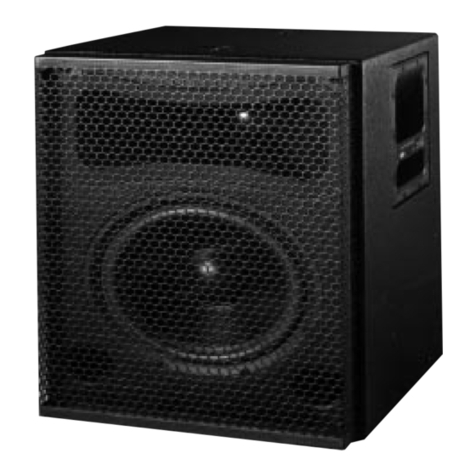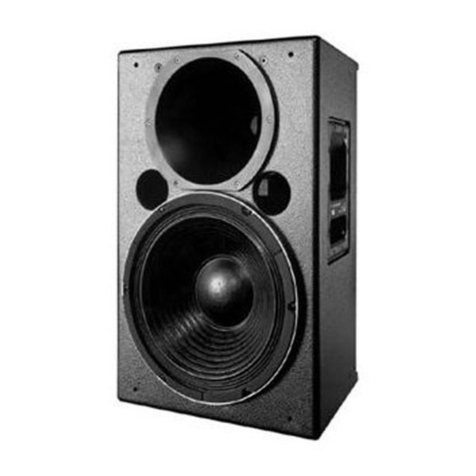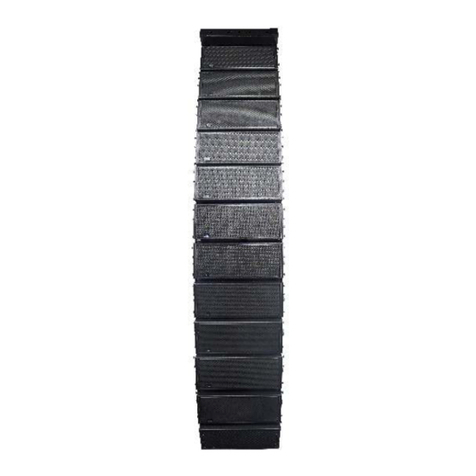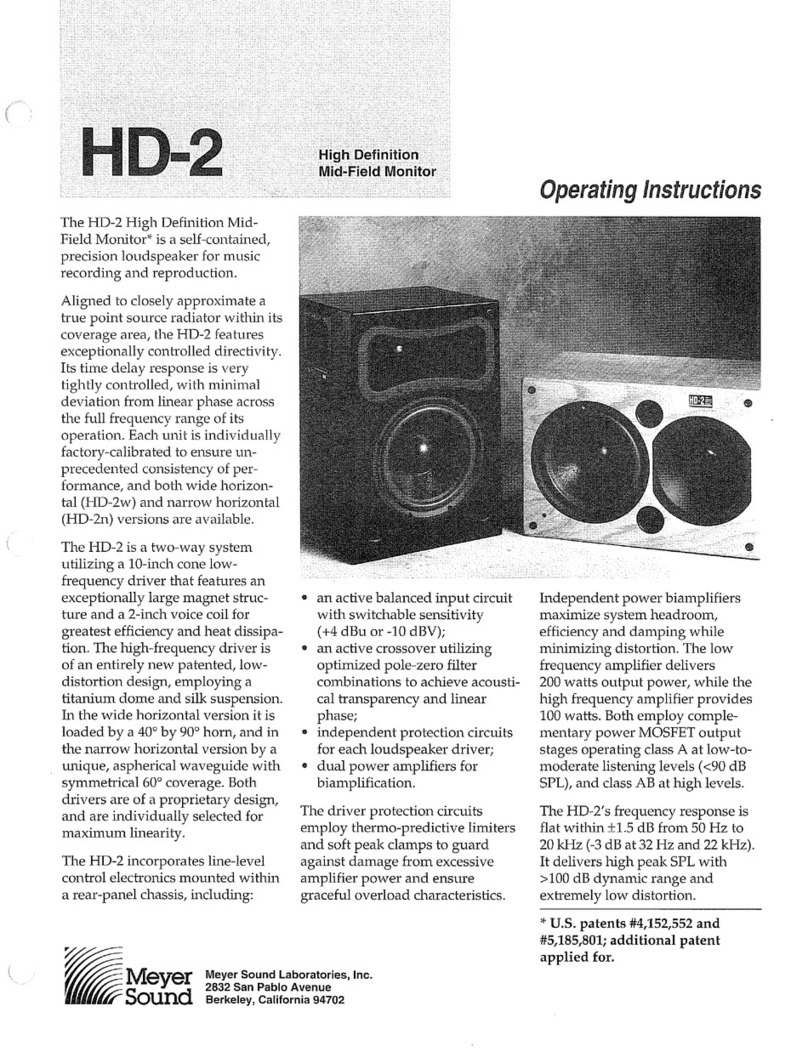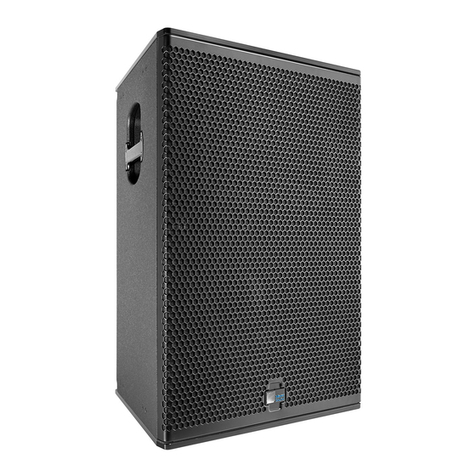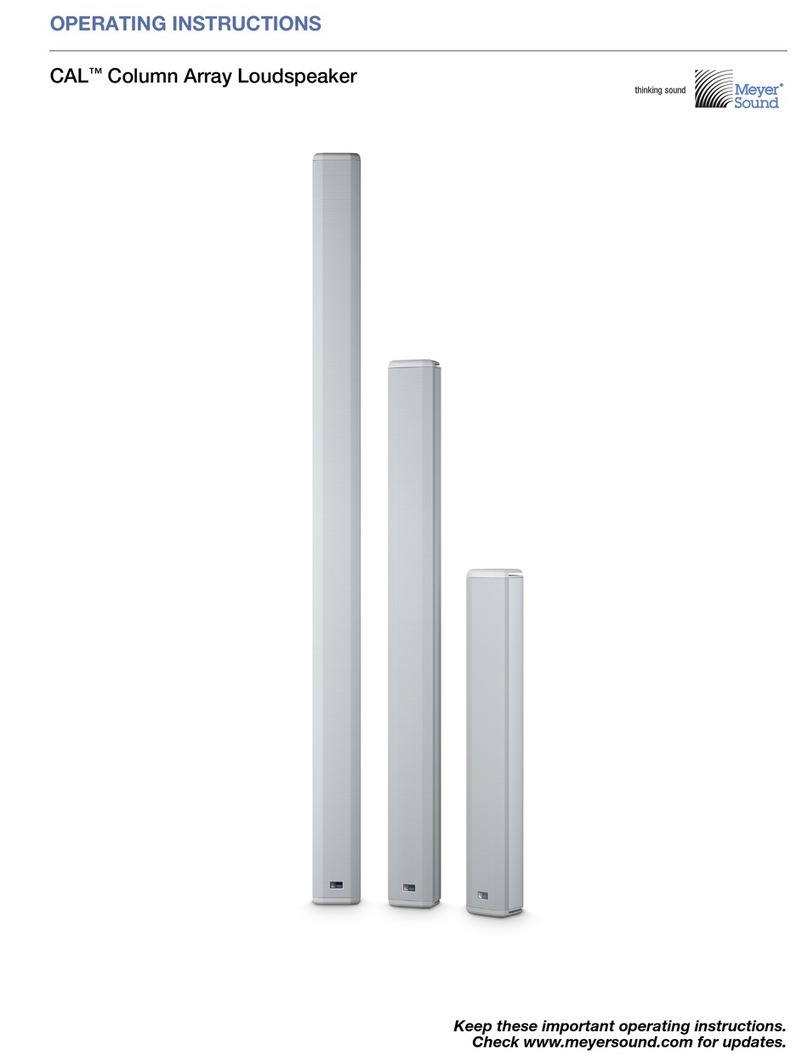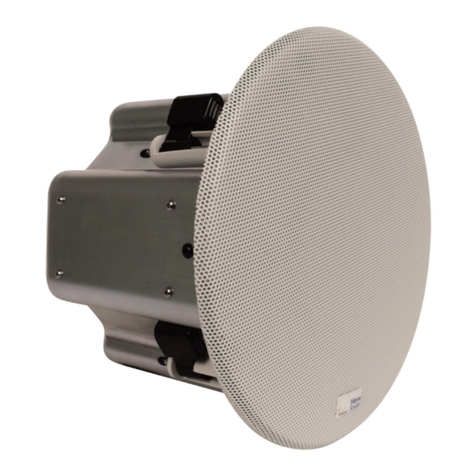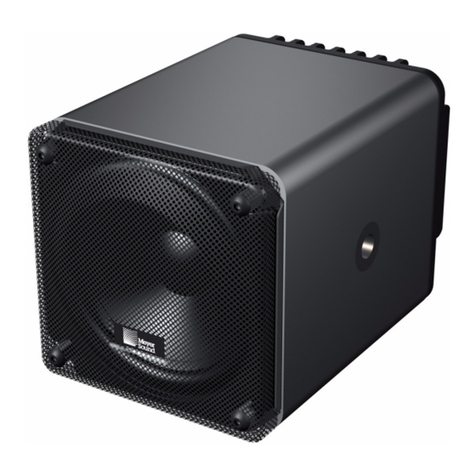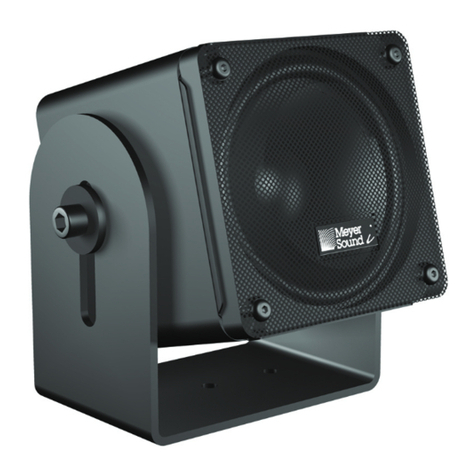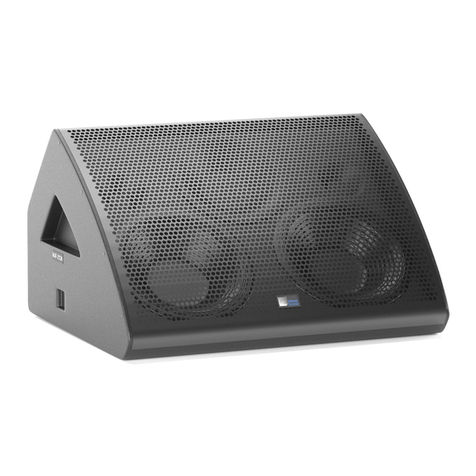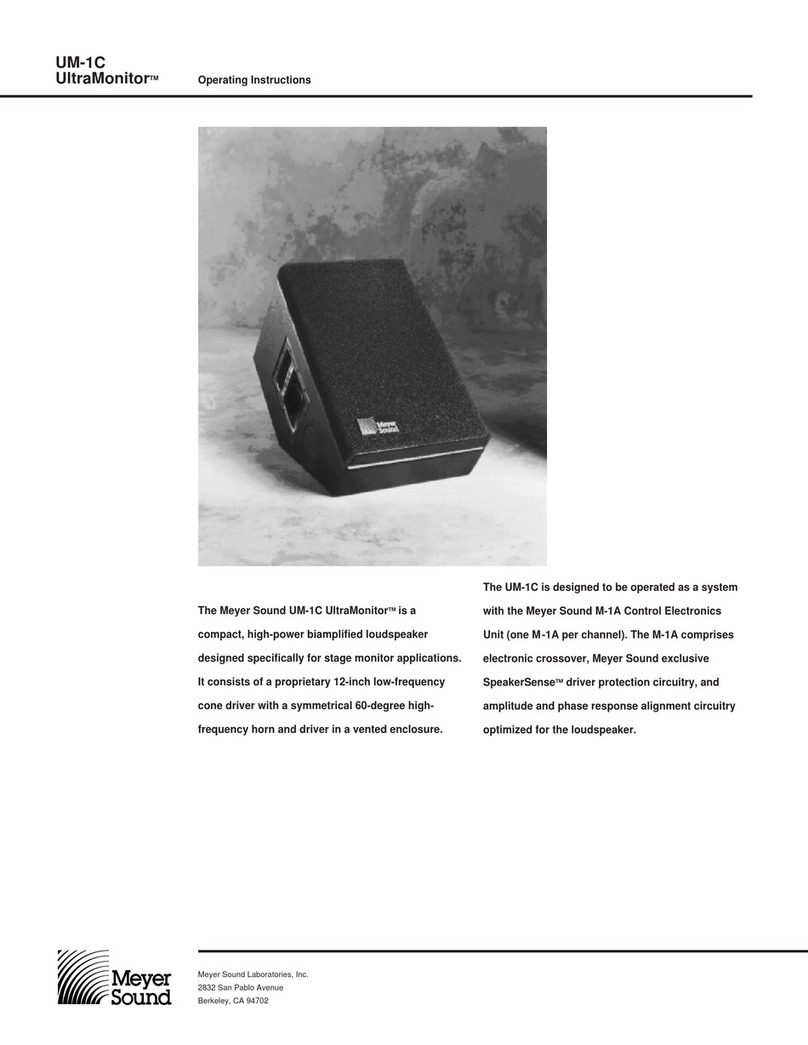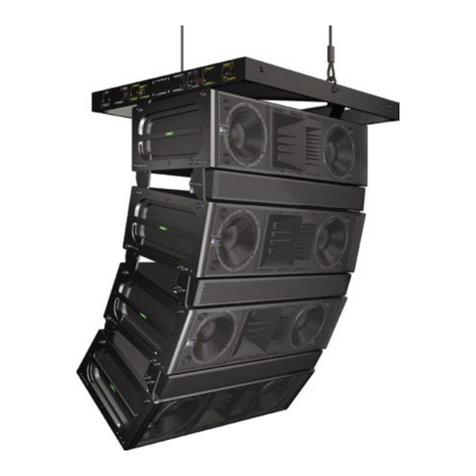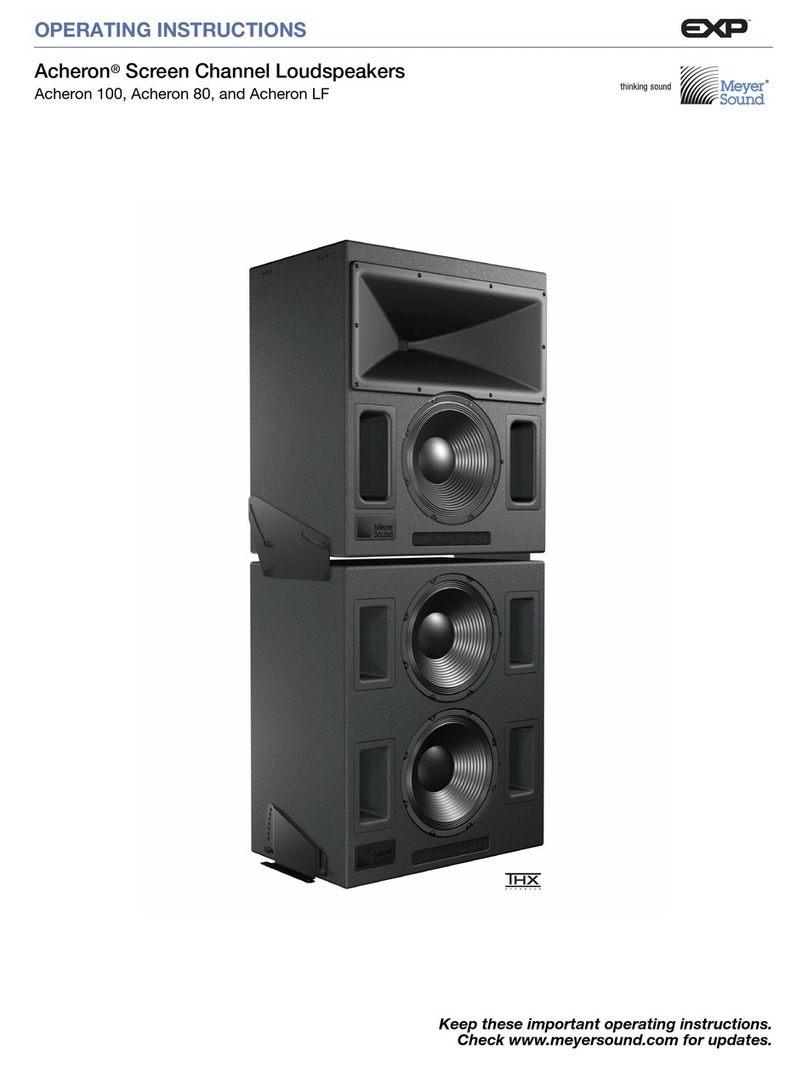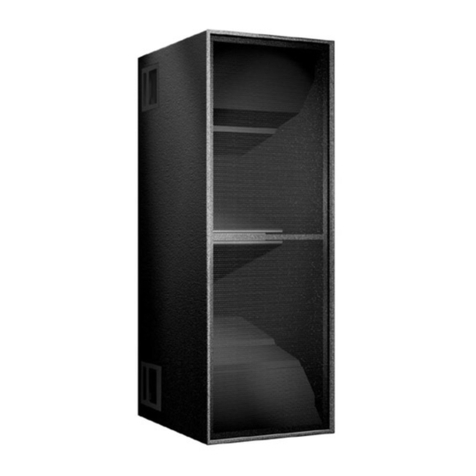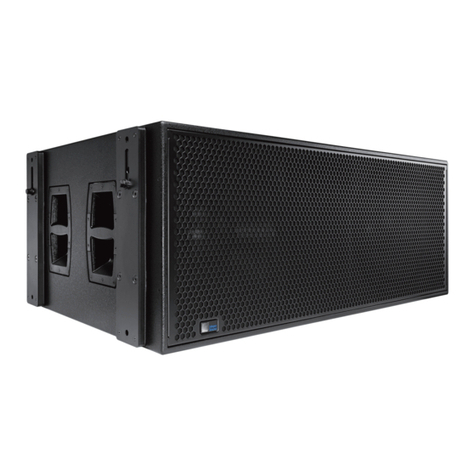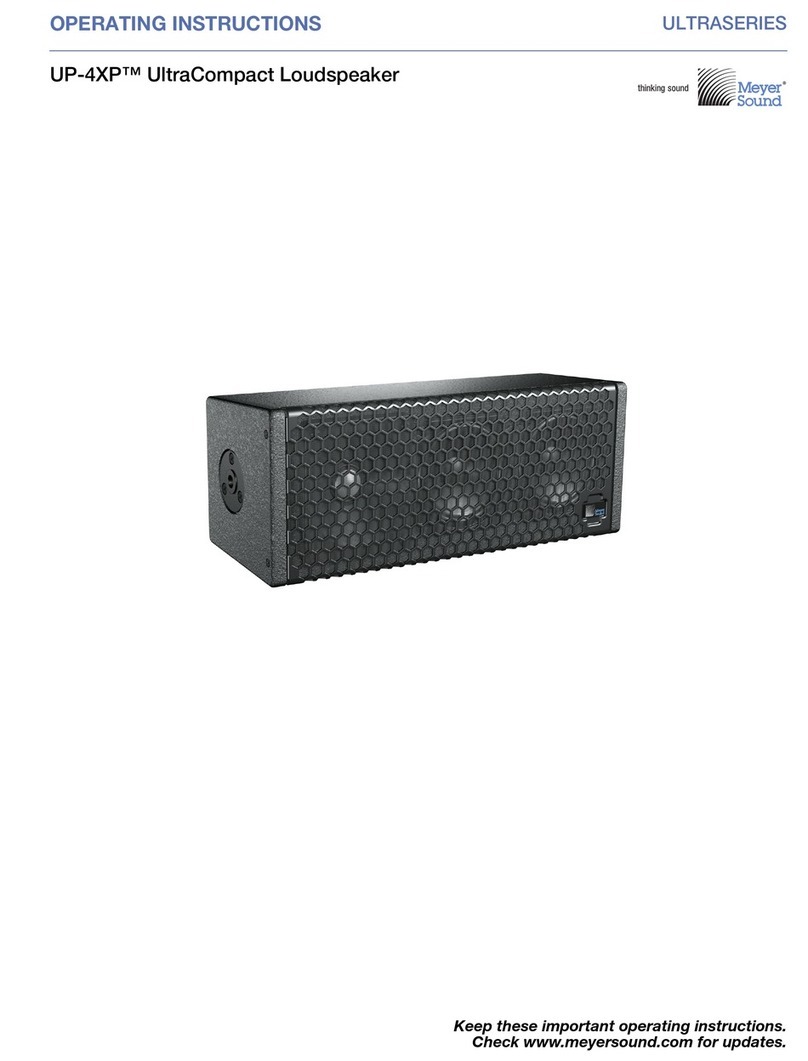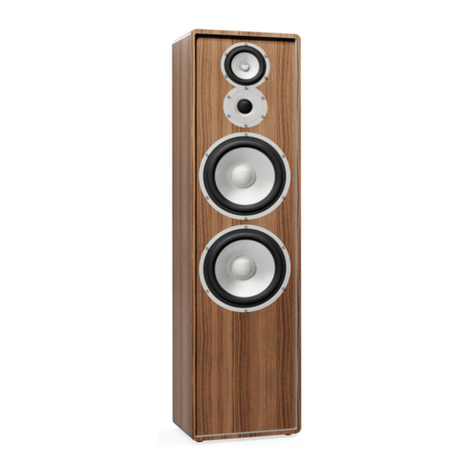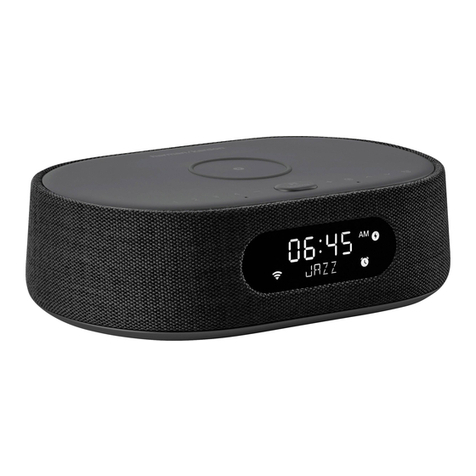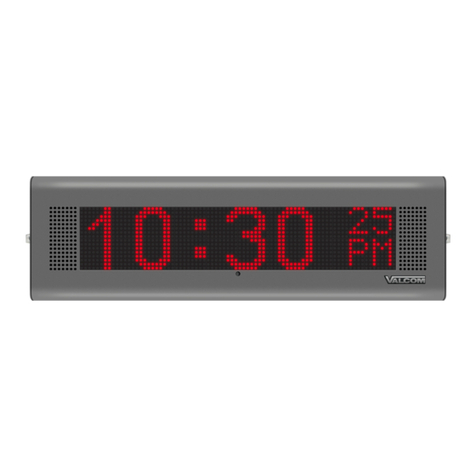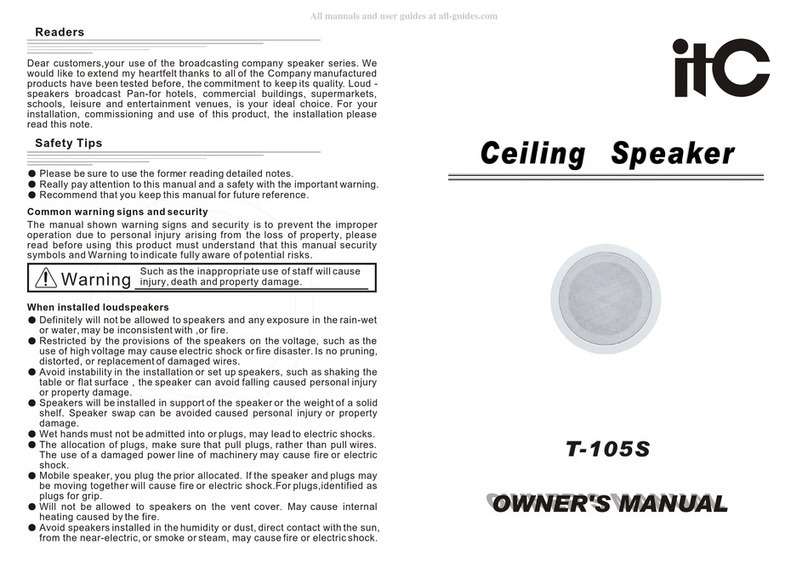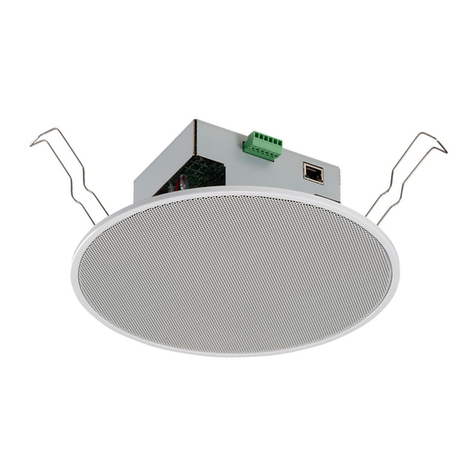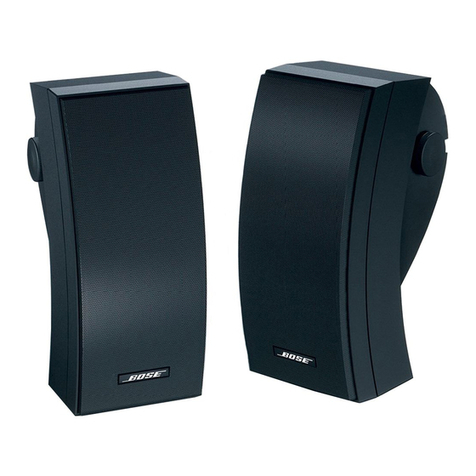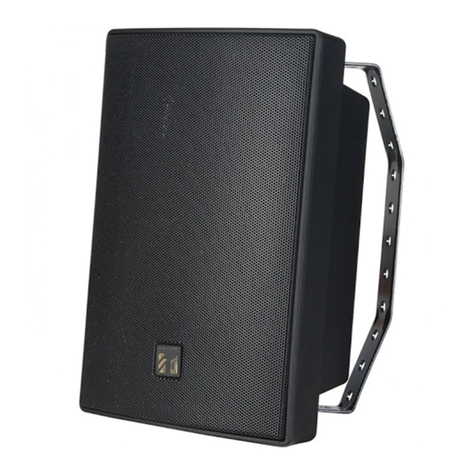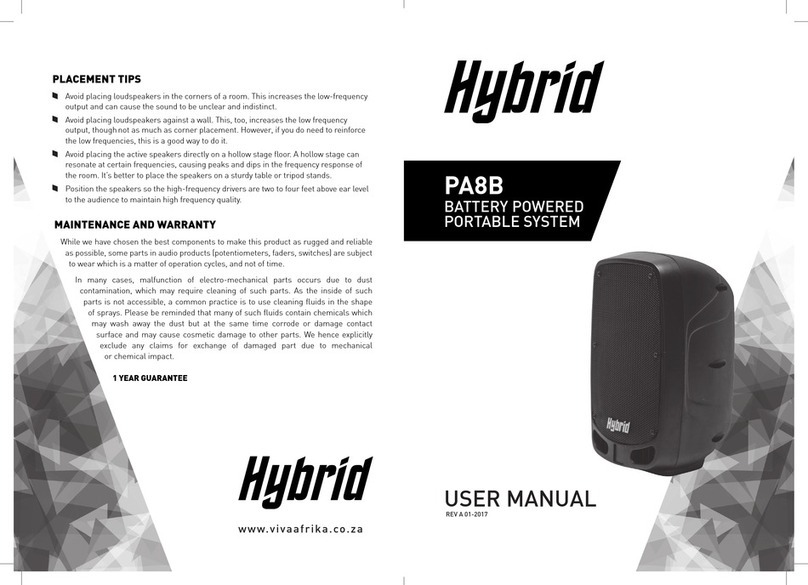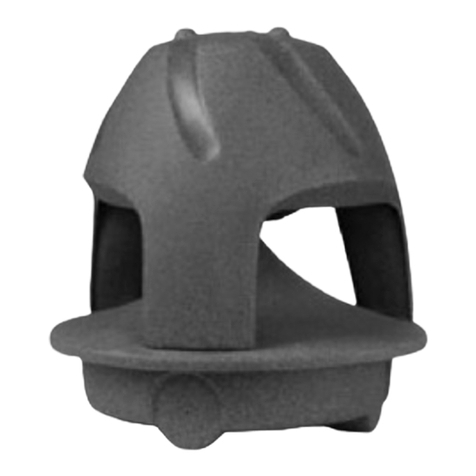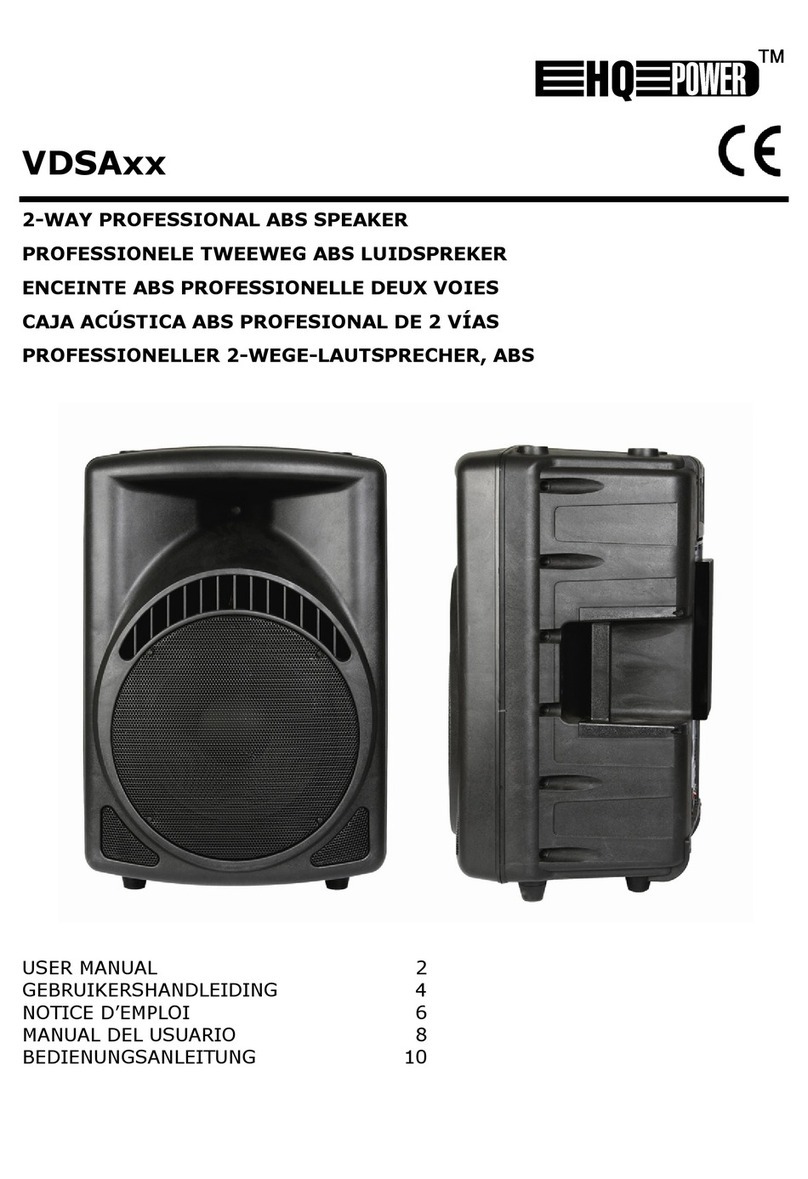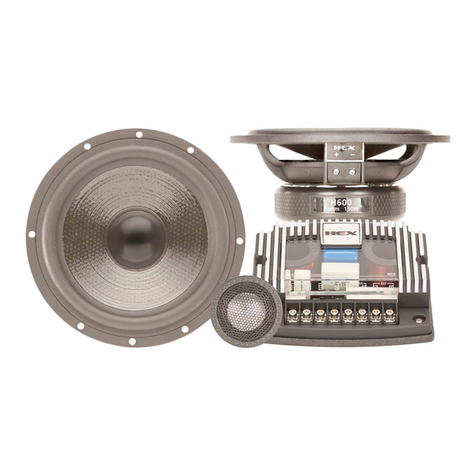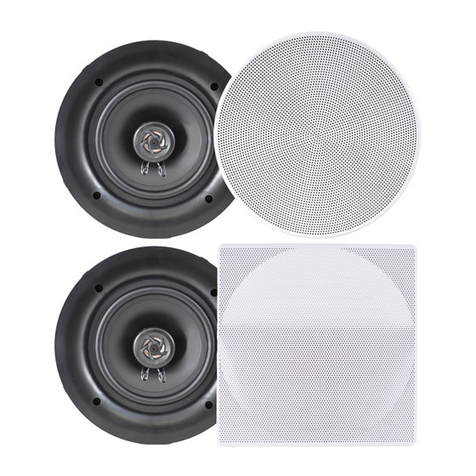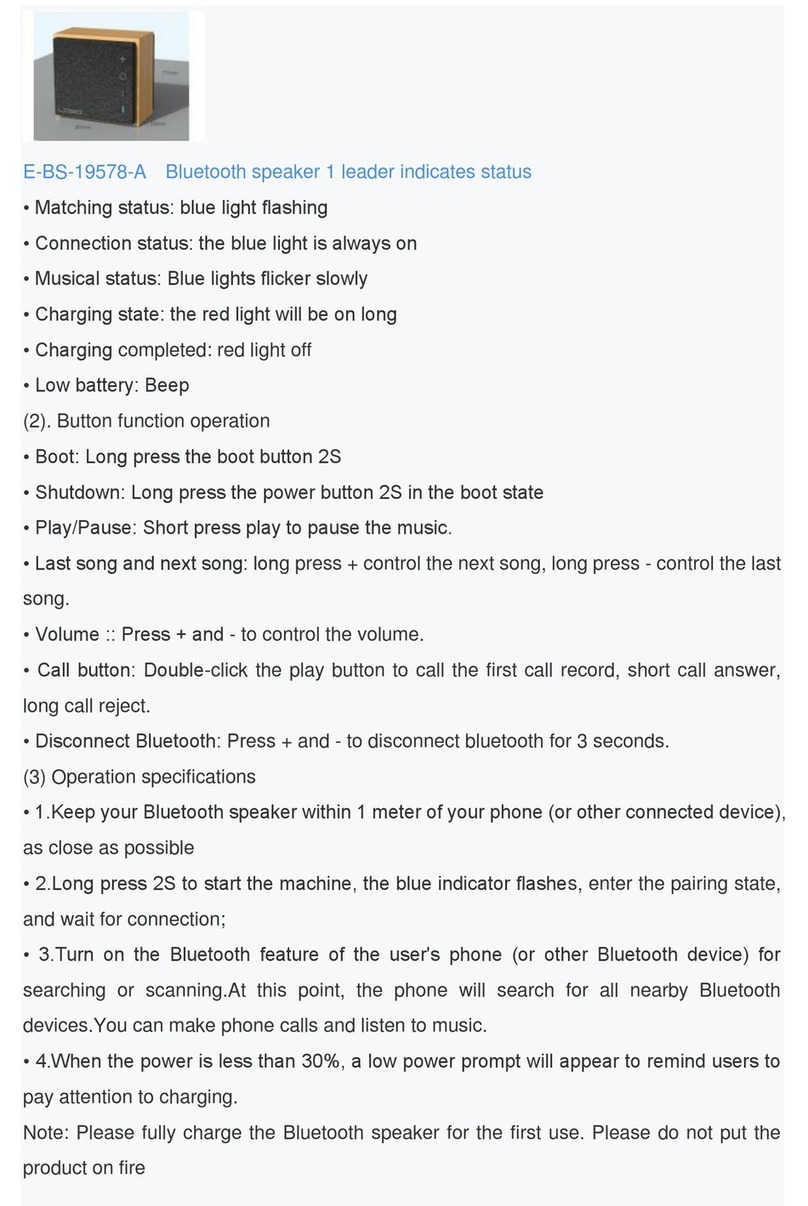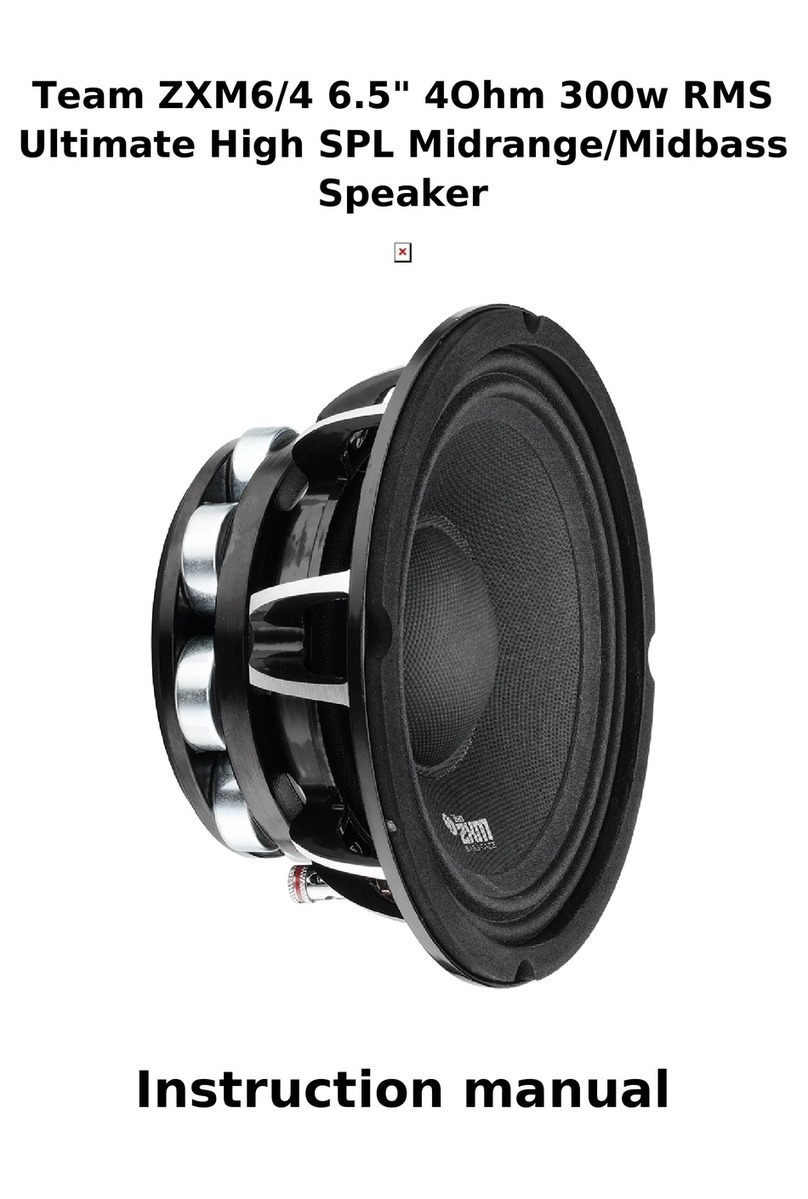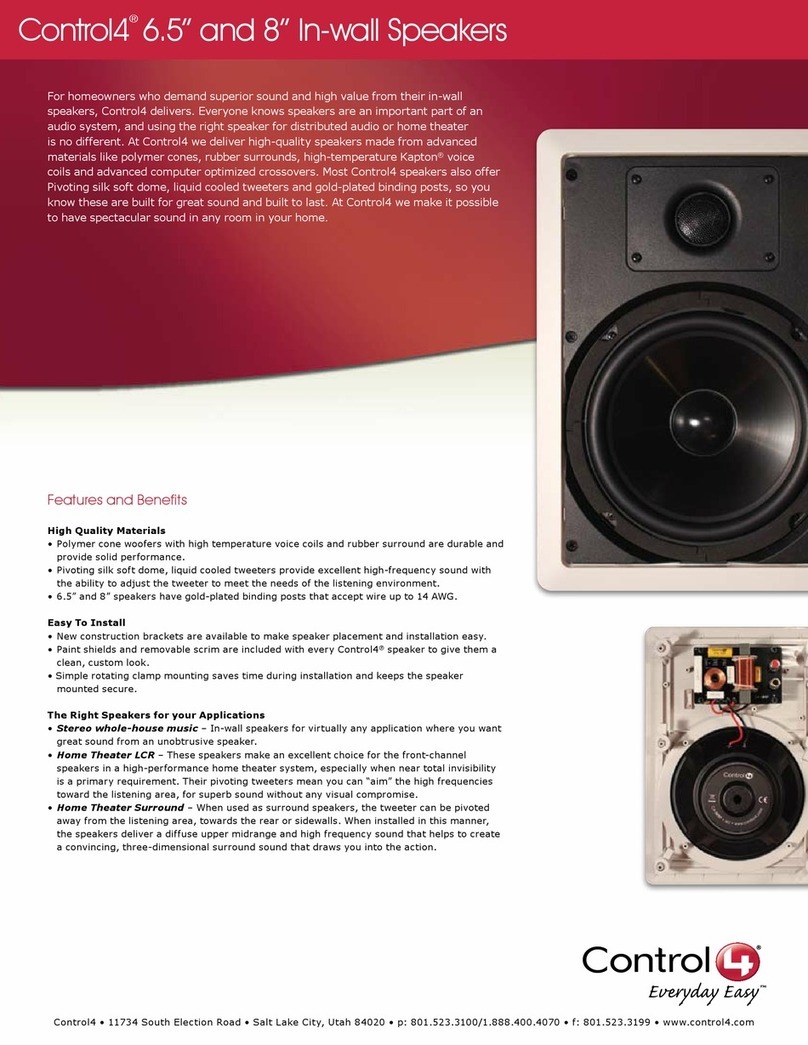
Operating Instructions
Meyer Sound Laboratories, Inc.
2832 San Pablo Avenue
Berkeley, CA 94702
MSL-5
Loudspeaker
Amplifier
Requirements The MSL-5 requires two channels of amplification with
each channel meeting the following specifications:
1. Inputs. Must utilize XLR-type connectors with bal-
anced input circuitry wired such that a positive voltage on
connector pin 3 results in a positive voltage at the ampli-
fier output.
2. Voltage Gain. Must be fixed at 16 dB (6.3 volts out
for 1 volt in) when measured from input to output.
3. Mains AC Power. AC power inlet must be a three-
circuit grounded plug with earth (mains AC) ground
permanently connected to chassis. The amplifier must
meet the power output criteria over a line voltage range
of 180V to 260V AC, 50/60 Hz (may be split into two
switch-selectable ranges).
4. Power Output. Each channel of amplification must
meet two power criteria:
• The amplifier must be capable of driving an 8Ωload
at 367 W continuously for 60 minutes without shut-
down or distortion exceeding 0.1%. Following the
above preconditioning, it must deliver 1100 W for 5
minutes without shut-down or distortion exceeding
0.1%.
• The amplifier must be capable of driving a 4Ωload
at 1800 W in 0.5 sec. bursts without shut-down,
peak clamping or distortion exceeding 0.1%.
It is highly recommended that only one high or low
frequency section of the MSL-5 be driven by a single
amplifier channel as each section represents a 4 ohm
load.
For further information on power amplifiers, please refer
to Power Amplifier Criteria, a Meyer Sound Technical
Note available from your dealer.
The MSL-5 is a bi-amplified system and must be used
with the M-5 Control Electronics Unit. The M-5 func-
tions as an active crossover, dividing the input signal into
high and low frequency components. The connection
terminals of the high and low frequency drivers appear
on a single EP-type 4-pin connector located on the rear
of the MSL-5 cabinet. The pin assignments for this
connector are:
Pin 1–Low frequency drivers, hot
Pin 2–Low frequency drivers, common
Pin 3–High frequency drivers, common
Pin 4–High frequency drivers, hot
(When the cabinet is fitted with an EP-5 connector for
European use, Pin 5 is unconnected.)
Note: If you are using standard Meyer Sound loud-
speaker cables and adapters, simply connect the fe-
male end of the speaker cable to the MSL-5, the male
end of the cable to the Meyer Sound pigtail adapter,
and the banana connectors of the adapter to your
amplifier outputs. In making connections between the
MSL-5 and its amplifiers, be sure to connect the 12-inch
drivers to the Lo amplifier, and the horn drivers to the
Hi amplifier. The adapter banana plugs are color-
coded as follows:
Red – Low frequency drivers
Black – High frequency drivers
For connections between the M-5 and the power ampli-
fiers, refer to the M-5 Operating Instructions.
The minimum wire size for connections between the
MSL-5 and the power amplifiers is 14 gauge (larger for
runs over 100 feet).
Connections
Verifying System
Polarity All Meyer Sound loudspeakers are thoroughly tested in
all stages of manufacture and correct polarity of indi-
vidual cabinets is assured. However, accidental polarity
reversal is possible when there are multiple amplifier
connections, and a single cabinet which is out of polarity
with the rest of its array will cause severe cancellation.
This will result in a noticeable decrease in SPL and
possible component damage.
Because of the extensive signal processing circuitry of
the M-5 Control Electronics Unit, the "phase-popper"
type of speaker polarity checkers cannot reliably be used
to test for correct polarity of the low and high drivers of
the MSL-5. However, because the MSL-5 is phase-
corrected through crossover, many of the portable spec-
trum analyzers can be used, with a pink noise source, to
test for driver polarity as follows:
1. Single cabinets. First, verify polarity of the woofers
by connecting a 9 volt battery at the end of the loud-
speaker cable.
EP connector Battery
Pin 1 + terminal
Pin 2 – terminal
• The woofer cones should move outward. Connect
the speaker cable to the amplifier.
• Input the pink noise source to the M-5 and advance
its level control to a convenient measuring level.
• Standing in front of the loudspeaker, position the
analyzer microphone directly between the HF horns
section and the 12-inch drivers, at a right angle to

